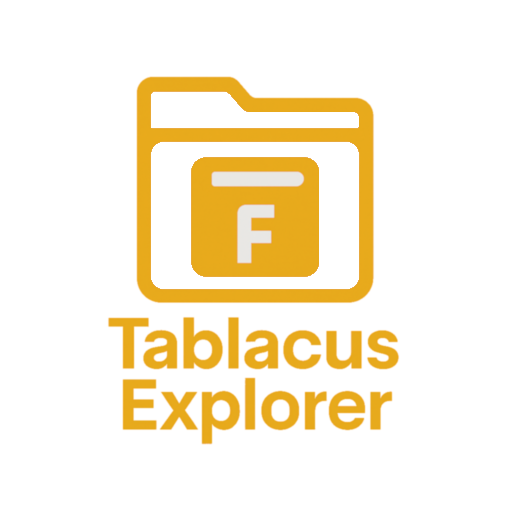Tablacus Explorer — A File Manager That’s More About Control Than Convention
Windows Explorer works. Until it doesn’t. Multi-folder workflows? File filtering? Layout persistence? Forget it. That’s where Tablacus Explorer steps in — not to replace Explorer’s look, but to rewrite its behavior.
It’s not for people who want pretty. It’s for those who need tabs, dual panes, configurable hotkeys, and a setup that doesn’t fall apart every time the OS updates. Tablacus looks basic out of the box, but under the hood, it’s modular and scriptable — and surprisingly addictive once it’s dialed in.
The catch? It takes a bit of tinkering. But for admins, power users, and obsessive organizers, it’s a surprisingly deep rabbit hole that rewards configuration.
What It Offers (When You Dig In)
| Feature | What That Looks Like in Practice |
| Tabbed Browsing | Keep multiple folders open without juggling windows. |
| Add-on Architecture | Core is minimal — everything else comes as plugins. |
| Custom Layouts | Save preferred views — horizontal splits, multi-panes, etc. |
| No Install Required | Portable EXE — runs from USB, no writes to registry. |
| Keyboard-Centric Control | Assign hotkeys to nearly everything — move, copy, tab-switch, focus. |
| Right-Click Rules | Context menus can be extended or rewritten. |
| Filter and Sort Engines | Dynamic file filtering — not just by name, but by time, type, size. |
| Scripting Support | Extend with scripts in JavaScript or VBScript — full control if needed. |
| Folder Tree & Panels | Sidebars, preview panes, tree views — all optional and swappable. |
| Community-Driven Add-ons | Dozens of user-built extras — from visual tweaks to workflow tools. |
Where It Belongs
Tablacus Explorer is built for those who:
– Keep ten folders open at once and want them remembered between sessions.
– Prefer tabs and splits over Alt+Tab gymnastics.
– Use Explorer like a workspace, not a one-off utility.
– Need scripting hooks and low-level behavior tweaks.
– Work from portable setups — on customer machines, recovery environments, USB drives.
It’s especially useful in file-heavy workflows: batch renaming, log review, config management, even versioned exports.
Not for everyone. But once it’s tuned, it tends to stay.
Getting Started (Expect to Tweak It)
*Runs on Windows 7–11. No installer. Lightweight. Standalone executable.*
- Download the Portable Version
https://tablacus.github.io/explorer_en.html
- Extract and Launch
No install step. Just unzip and run TE64.exe or TE32.exe depending on system.
- Install Add-ons
From inside the app, open the Add-ons manager. Install tab management, dual-pane layout, folder history, anything needed.
- Customize Layout
Drag and drop panes, enable toolbars, assign hotkeys — or import someone else’s config and start from there.
- Set Defaults and Save
Preferences are stored in INI files. No registry use. Backup and reuse on other machines freely.
Final Thought
Tablacus Explorer doesn’t hold your hand. It won’t wow at first glance. But for anyone who’s wrestled with stock Explorer long enough, it feels like a toolkit — one that finally respects how someone works, instead of forcing them to adapt.
It takes a little setup. Maybe a little trial and error. But when it clicks? It becomes hard to switch away.






